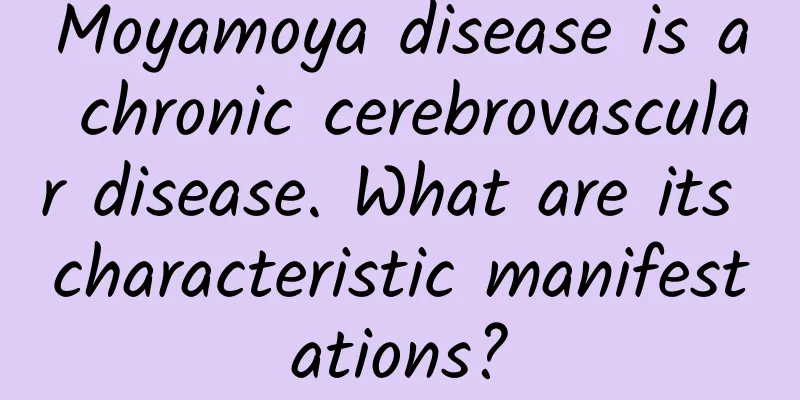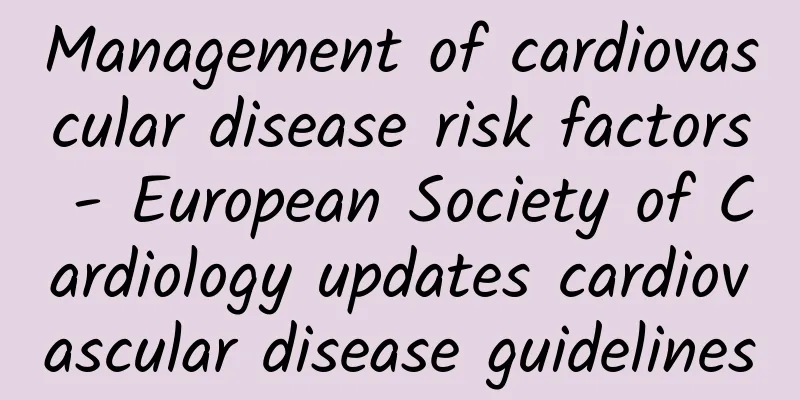Moyamoya disease is a chronic cerebrovascular disease. What are its characteristic manifestations?

|
Moyamoya disease is a rare cerebrovascular disease. During cerebrovascular examination, the abnormal vascular network at the site of disease appears "smoke-like", so it is called moyamoya disease. Moyamoya disease increases the risk of stroke in patients. What are the characteristics of moyamoya disease in daily life? 1. Age: There are two peak incidence periods of moyamoya disease, namely children (under 10 years old) and middle-aged people (40-50 years old). Patients in the high-risk age group are recommended to go to the hospital for cerebrovascular examination if they have frequent stroke symptoms with unknown causes. Second, the patient is young, but has frequent cerebral infarction and cerebral hemorrhage, sometimes even alternating, and the cause has never been found. Cerebral infarction and cerebral hemorrhage are common diseases in the elderly, and the risk of cerebral infarction or cerebral hemorrhage in young patients is very small. For some reason, the large blood vessels in the brain of patients with moyamoya disease gradually narrow or even occlude, and compensatory blood vessels are formed around them. However, the growth rate of compensatory blood vessels is lower than the occlusion rate of large blood vessels, resulting in insufficient blood supply to the brain, and patients are prone to transient cerebral ischemia and cerebral infarction. On the other hand, compensatory blood vessels are fragile and prone to rupture and bleed. When blood pressure increases, blood vessels cannot withstand the pressure, which can easily lead to bleeding. Transient cerebral ischemia, cerebral infarction and cerebral hemorrhage are the main symptoms of moyamoya disease. If moyamoya disease is not treated, the blood supply to the patient's brain will not be improved, and stroke will occur frequently. Therefore, when patients have this condition, it is recommended to go to the hospital for examination in time. If there is any abnormality, timely treatment should be carried out to reduce the risk of disability of patients. 3. Abnormal behavior of the child before and after: The child used to like outdoor sports, study hard, and have good grades. Now the child often stops running and suddenly has transient numbness and weakness in the limbs. Over time, the child is unwilling to go out for outdoor activities. In class, the child begins to lose concentration, memory declines, and academic performance plummets. 4. Abnormal imaging images: If the patient has the above symptoms and goes to the hospital for a cerebrovascular examination, it is found that the blood vessels at the patient's lesion appear "smoke-like", which means the patient can be diagnosed with moyamoya disease. |
<<: Ladies who love beauty, do you know how to choose products to lighten spots?
Recommend
Normal reference chart of blood hcg and progesterone
The Hcg level will increase with the increase of ...
Is 48 too early to stop menstruating?
Many women are very worried when they reach menop...
What to do if you have amenorrhea and how to treat it
Nowadays, many women have the problem of amenorrh...
What are the symptoms of endometrial tuberculosis?
Uterine wall tuberculosis is a relatively serious...
Girl's palm holographic reaction
Hands are a woman's second face. Some people ...
Morning Consult: Only 25% of Americans like Facebook's new name
Facebook has announced its new corporate name, Me...
The lochia is almost gone and has a fishy smell
Do you know what lochia is? This question may not...
What is the cause of bleeding ten days after menstruation?
Many women are particularly worried when they ble...
How to reduce breast size
How can you slim down your breasts? This problem ...
Can I eat bananas during my period?
Menstruation is a symbol of every adult woman, an...
Ovarian location map
Women all know about the uterus and ovaries, but ...
Who is more likely to get cancer: a smoker or a drinker or a non-smoker or non-drinker? Why?
In early 2021, the World Health Organization'...
What to do if you have sex at the end of your period
As we all know, during the menstrual period, whet...
What kind of cat is the one in the movie Lost in Russia? How much does a cat like Lost in Russia cost?
On the first day of the release of the movie &quo...
comScore: 2011 Global Social Network Report Focuses on User Interests Rather than Real Social Circles
Trends in unique user visits to Twitter, MySpace,...









